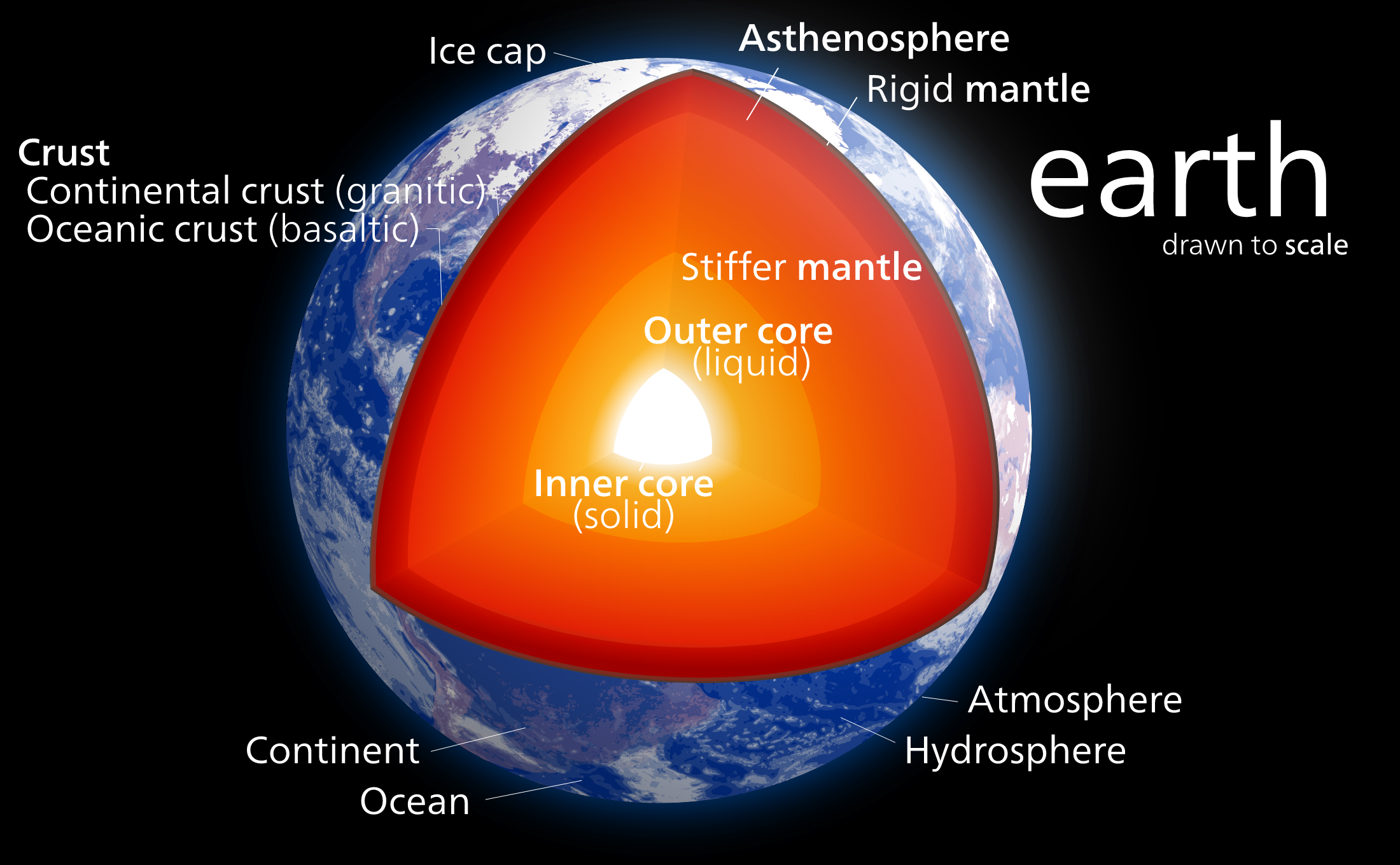
What is geothermal energy?
Answer
494.7k+ views
1 likes
Hint:The interior of Earth consists of three distinct regions – Crust, Mantle, Outer Core, and Inner Core. The temperature in these regions increases to very higher amounts as one goes down towards the core.

Complete step by step answer:
The geothermal energy is defined as the heat within the Earth. The word geothermal is a combination of two Greek words, geo meaning earth and thermal meaning heat.
The source of the Earth’s interior heat is the thermal energy generated from radioactive decay and the continuous loss of heat from the Earth’s interior. The temperatures at the mantle-core boundary can reach up to a value of
Geothermal power is cost-efficient, reliable, sustainable, and renewable which opens up a new scope for using it as an alternate source of energy as opposed to conventional sources of energy such as fossil fuels. However, the main disadvantage is that the energy source has been limited to tectonic plate boundaries.
There are two forms in which geothermal energy can be tapped from the earth’s interior – Vapor-dominated and Liquid-dominated forms. Liquid-dominated reservoirs (LDRs) are more common with temperatures greater than 200 °C (392 °F) and are found near young volcanoes surrounding the Pacific Ocean and in rift zones and hot spots. Flash plants are the common way to generate electricity from these sources.
Note: The most natural forms of geothermal energy are hot springs. One of the most famous among them is in the Yellowstone National Park in Wyoming, USA, which is widely known for its huge geothermal features.

Complete step by step answer:
The geothermal energy is defined as the heat within the Earth. The word geothermal is a combination of two Greek words, geo meaning earth and thermal meaning heat.
The source of the Earth’s interior heat is the thermal energy generated from radioactive decay and the continuous loss of heat from the Earth’s interior. The temperatures at the mantle-core boundary can reach up to a value of
Geothermal power is cost-efficient, reliable, sustainable, and renewable which opens up a new scope for using it as an alternate source of energy as opposed to conventional sources of energy such as fossil fuels. However, the main disadvantage is that the energy source has been limited to tectonic plate boundaries.
There are two forms in which geothermal energy can be tapped from the earth’s interior – Vapor-dominated and Liquid-dominated forms. Liquid-dominated reservoirs (LDRs) are more common with temperatures greater than 200 °C (392 °F) and are found near young volcanoes surrounding the Pacific Ocean and in rift zones and hot spots. Flash plants are the common way to generate electricity from these sources.
Note: The most natural forms of geothermal energy are hot springs. One of the most famous among them is in the Yellowstone National Park in Wyoming, USA, which is widely known for its huge geothermal features.
Latest Vedantu courses for you
Grade 10 | MAHARASHTRABOARD | SCHOOL | English
Vedantu 10 Maharashtra Pro Lite (2025-26)
School Full course for MAHARASHTRABOARD students
₹31,500 per year
Recently Updated Pages
Express the following as a fraction and simplify a class 7 maths CBSE

The length and width of a rectangle are in ratio of class 7 maths CBSE

The ratio of the income to the expenditure of a family class 7 maths CBSE

How do you write 025 million in scientific notatio class 7 maths CBSE

How do you convert 295 meters per second to kilometers class 7 maths CBSE

Write the following in Roman numerals 25819 class 7 maths CBSE

Trending doubts
A boat goes 24 km upstream and 28 km downstream in class 10 maths CBSE

The Equation xxx + 2 is Satisfied when x is Equal to Class 10 Maths

What are the public facilities provided by the government? Also explain each facility

Difference between mass and weight class 10 physics CBSE

Statistics in singular sense includes A Collection class 10 maths CBSE

Why is there a time difference of about 5 hours between class 10 social science CBSE




